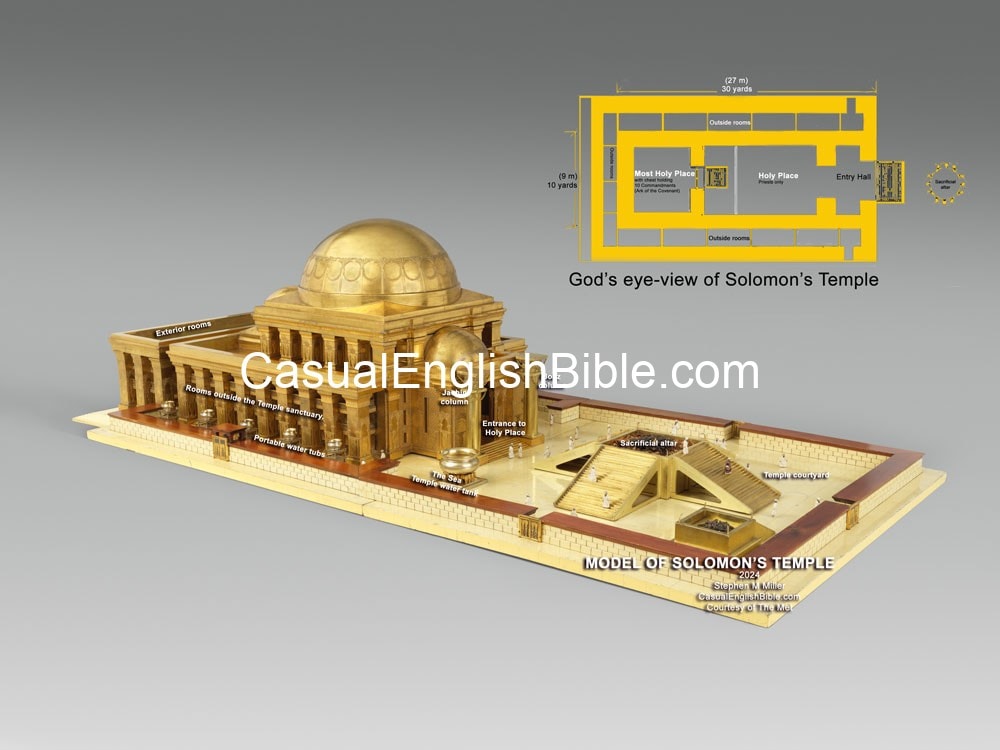
Model of Solomon’s Temple
Model of Solomon’s Temple
The makers
This 1883 architectural model of Solomon's Temple follows a design by a British Bible scholar named Thomas Newberry. It's carved from wood and gilded in silver and brass.
The photo is courtesy of the Metropolitan Museum of New YorkModel based on the Bible’s description
The museum describes it as an exhibit of skilled craftsmanship and exquisite artistry, as well as architectural ingenuity and conceptual brilliance. Artisans based on this model on biblical descriptions of the Temple. The built into the model the following architectural layout: Porch, Holy Place, Holy of Holies, side chambers and galleries. They added the Altar of Burnt Offerings, the Brazen Sea, ten Lavers, Golden Altar of Incense, ten Lamp Stands, ten Tables for Shew Bread, Ark of the Covenant, two Great Cherubim, two pillars (called "Jachin and Boas"). And they provided a sense of the size of the Temple by including and numerous figures, such as the robed priests. They covered all the important details known of the Temple. Displayed as the centerpiece of the groundbreaking Anglo-Jewish Historical Exhibition in the Royal Albert Hall (April 4th – August, 1887), this model promoted the exhibition’s key goals . Those were including reviving interest in the preservation of Jewish material culture and to encourage awareness of the prominent role of Anglo-Jewry in nineteenth-century England. An object of rich historical value and superb artistry, this model – especially its intriguing domed-roof not directly mentioned in the biblical descriptions of the Temple – continues to fascinate architectural and biblical scholars." Solomon's Temple follow the basic style of temples at the time. Ruins of pagan temples in Philistine territory show a similar layout, with a sacred room in the back, like Solomon's Most Holy Place. It's also called the Holy of Holies.Angels for the Most Holy Place
For the Most Holy Room, Solomon added two identical cherubim, 15-feet high, carved from the hard wood of olive trees. 24The cherubim had wings, with a wingspan as wide as they were tall. Each wing measured 7 ½ feet to the tip. 25Each cherub looked like the other. Identical twins with wings. 26One cherub was 15 feet tall, and so was the other" (1 Kings 6:23-27).For feature articles about the Bible
Stephen M. Miller's blogModel Solomon's Temple

